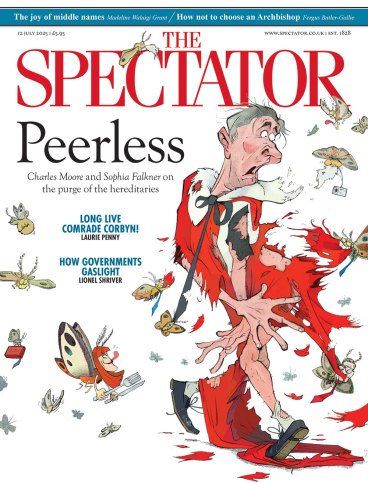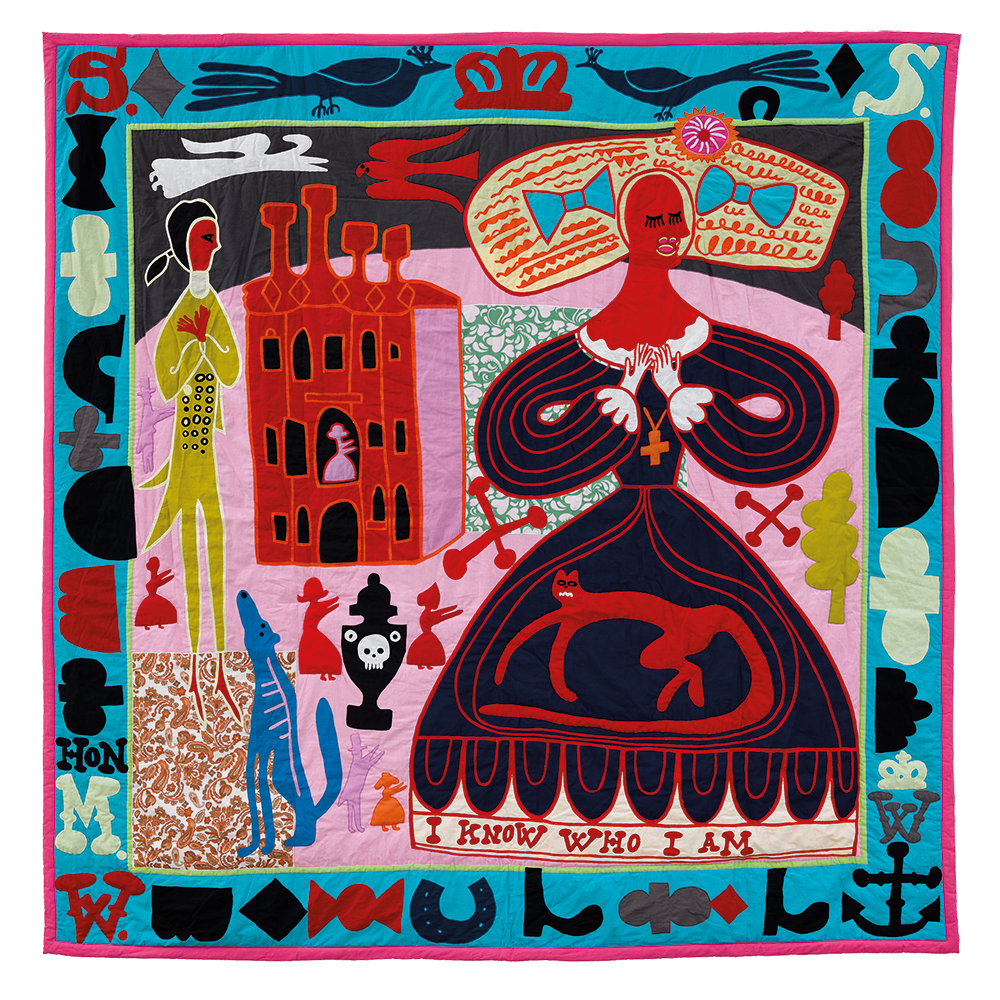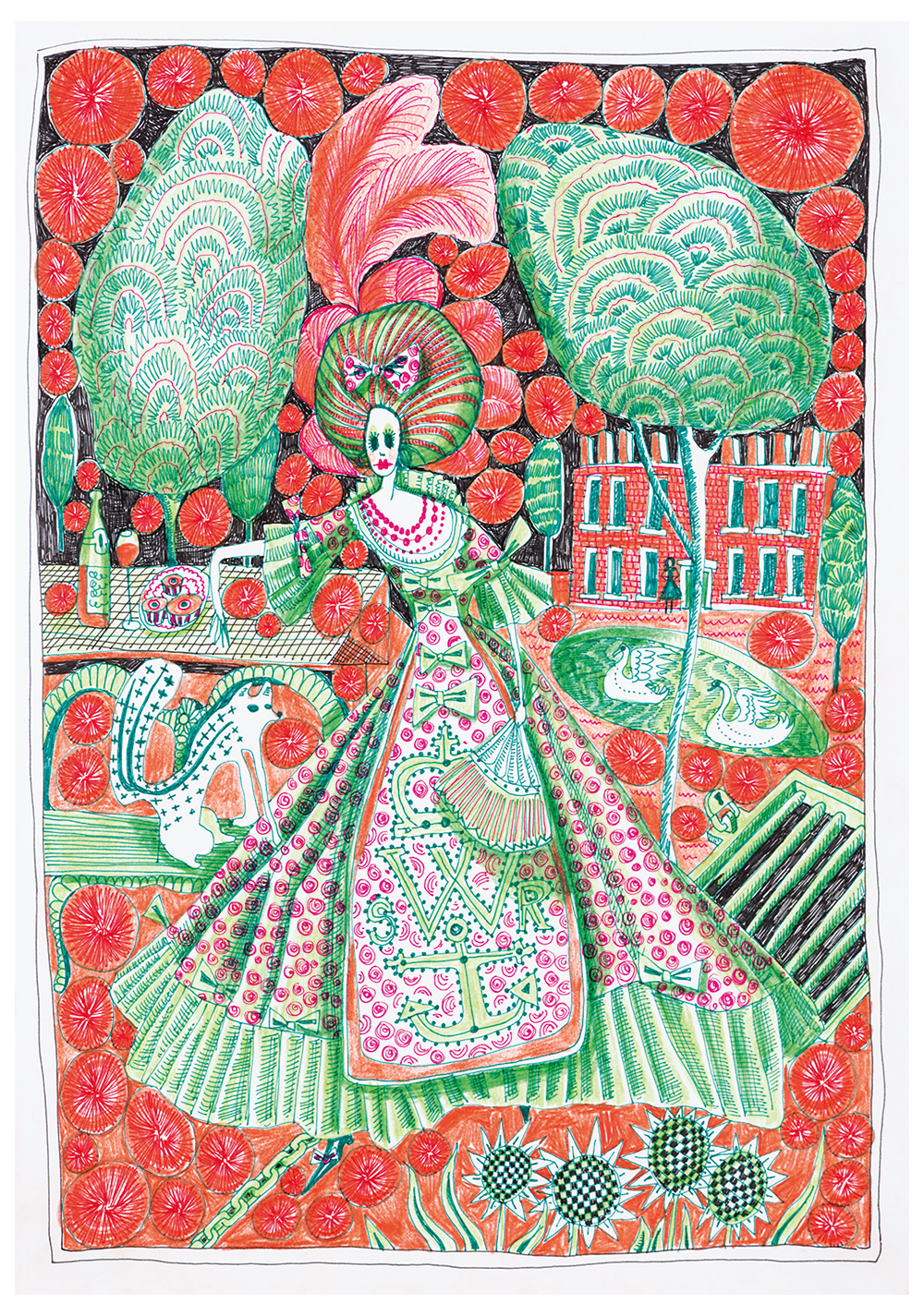
This show was largely panned in the papers when it opened in April, with critics calling it ‘awkward and snarky’, applying that sturdy English put-down ‘arch’, and generally carping at ‘rich insider’ Sir Grayson Perry for posing as an outsider artist. Word-of-mouth reviews were completely different, however, almost as if gallery-goers, free from the necessity of taking an art-historical position, had just really enjoyed the whole bonkers experience.
To get to the exhibition, which is down in the former cellars of Hertford House, you first walk through the Wallace Collection, past its gleaming ormolu and onyx treasures. The place is a portal into the ancien régime, yet still carries a feeling – imprinted into the small-scale neoclassical architecture – that this is a home. A fantasy home. A home for a fantasist. ‘A poor person’s idea of how a rich person’s home should look,’ as Perry puts it. The sort of place one might think one lived in, if one were having a mental-health crisis.
Which brings us to Perry’s invented persona Shirley Smith, formerly in the care of Claybury Mental Hospital, Essex, now living in a council flat in Islington, and suffering – or enjoying – delusions of grandeur. The audio guide begins with her voicing a letter to the 9th Marquess announcing she has recently discovered she is his heir and asking when she can move into her rightful home. A tragicomic conceit, and a rich vein for Perry, who makes many of the works in the exhibition in her persona – intense, repetitive line drawings of herself in fine clothes, and a truly hideous handcrafted version of Boucher’s ‘Madame de Pompadour’ made by Shirley Smith out of wool and bobbins during art-therapy sessions.
Because this is the Wallace Collection, the original ‘Pompadour’ by Boucher is hanging here, too, completely upstaged by Shirley Smith’s garish stitching; when I finally noticed the familiar masterpiece, I burst out laughing, and saw it afresh – an achievement of the show.
Perry has created Shirley Smith in the image of Madge Gill (1882-1961), the outsider artist, scribbler, weaver and mystic. Several of her drawings and textiles are displayed, illuminating but tangential. In fact, the whole show is a constellation of clever tangents and compelling ideas, volleying from AI to the rococo, from ‘craftivism’ to – in a virtue-signalling tapestry by Perry that is unappealing to look at, but makes another synaptic spark – the problems of patronage.
It’s a very stimulating show, the most cerebral fun I’ve had in a gallery for a long time
Delusions of Grandeur digs into the feelings that the Wallace Collection evokes; Perry himself has a kinky engagement with the armour, hates the shiny Sèvres and can’t keep a straight face when he looks at the miniatures, which he arranges into a family tree of psychiatric disorders. He has a lot of fun with it all, believing an artist’s job is to ‘bite the hand that feeds him, but not too hard’. The mood is mildly subversive, the social-warrior sting removed by the fact that Hertford House is bequeathed to the nation, and you can stroll in at any time, for free.

Perry puts his spin on the weaponry here, creating ‘A Gun For Shooting the Past’, a gaudy neon fake blunderbuss that sits beside a real silver-enamelled flintlock. ‘This gun is a talisman of power over our history,’ he riffs. ‘It has no power in the here-and-now, it cannot kill anyone. It is for settling scores with the past, it kills memories… For those of us who are still controlled by painful experiences at the hands of people in the past, perhaps several generations ago, this gun can deliver cleansing fire.’ The woman next to me beamed at it, in on the psychotherapeutic language, or simply enjoying the conceit.
This work will live on, I think, but there is no new masterpiece here, nothing you want to buy a postcard of. In fact, as noted, many of the works are ugly, failures of one sort or another. But it’s a very stimulating show, the most cerebral fun I’ve had in a gallery for a long time. I was hoping for a more complete engagement with Shirley Smith’s style, but the glimpse of the numinous power of outsider art dwindles like a candle next to Perry’s electric light. The promise that we will see the interior of Shirley Smith’s home does not come off, and instead we get more and more Grayson Perry showing through the patina of Smith. But Perry is, I suppose, what people have come for, and he has pulled off another coup here.








Comments